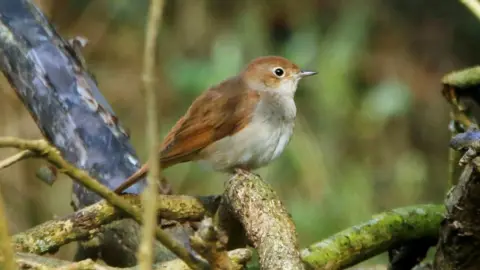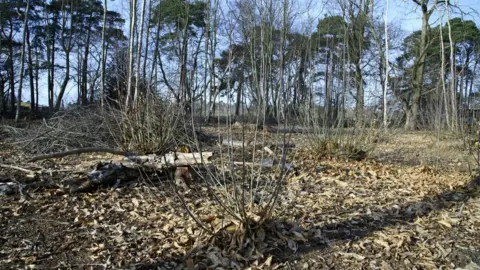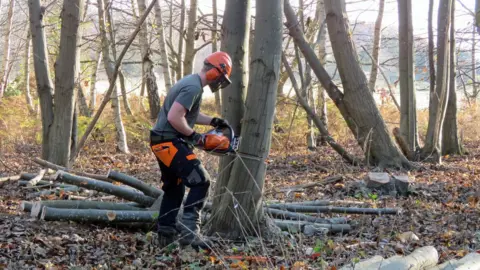Sutton Hoo: Ancient technique aims to boost nightingale numbers
 National Trust
National TrustAn ancient system of woodland management is being planned to boost the nightingale population at an important archaeological site.
The songbirds are mentioned in Netflix film The Dig, about the 1939 excavation of an Anglo-Saxon burial ship at Sutton Hoo in Suffolk.
The National Trust, which looks after the site, plans to reintroduce coppicing to encourage new tree growth.
It said it aimed to provide the "perfect nesting habitat".
Sutton Hoo is thought to be the final resting place of King Raedwald, who ruled East Anglia in the 7th Century.
In The Dig, fictional character Rory Lomax tells archaeologist Peggy Piggott how nightingale song reminds him of the woods there.
 National Trust
National TrustThe species has seen a population decline of 90% in the last 50 years leaving about 5,500 breeding males.
It is now listed among the UK's most threatened birds, featuring on the RSPB's red list.
The coppicing technique, which dates back to the Stone Age, involves the cutting of trees close to the ground on a regular cycle, encouraging fast new growth of shoots.
It will be the first time the technique has been used there since the majority of the original woodland was felled after the Great Storm in 1987, the trust said.
Jonathan Plews, National Trust ranger, said the process would allow more light into the woodland floor, which would boost flowers and bramble, which is the "perfect nesting habitat for nightingales".
"Currently, there are a small number of nightingales on the estate, limited to one area of woodland," he said.
"Last year we recorded four singing males at Sutton Hoo and the hope is we can attract many more through this form of woodland management technique."
 National Trust
National TrustMr Plews said it would "take a few years for the bramble to establish" but they hoped to see more nightingales "in approximately four years" alongside other protected and at-risk birds such as spotted flycatcher, woodlark and nightjar."
The trust said the coppicing would be carried out using chainsaws and a mini tractor to limit disturbance to the woodland floor.
This would protect the archaeological features in the woodland, which include a Roman quarry and World War Two anti-air platform.
Wood felled would be used to build fences, gateways, benches and sculptures across the estate, as well as to build bird boxes to further support endangered species.

Find BBC News: East of England on Facebook, Instagram and Twitter. If you have a story suggestion email [email protected]
